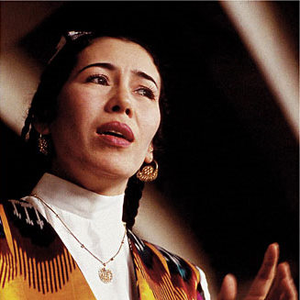
| Trackimage | Playbut | Trackname | Playbut | Trackname |
|---|---|---|---|---|
| 83954052 | Play | Monâjât | 00:00 Tools | |
| 83954053 | Play | Tanâvar | 00:00 Tools | |
| 83954054 | Play | Kim avval kim ilgari | 00:00 Tools | |
| 83954055 | Play | Girya | 00:00 Tools | |
| 83954056 | Play | Ushshâq | 00:00 Tools | |
| 83954058 | Play | Dogâh-Hosayni | 00:00 Tools | |
| 83954057 | Play | Aylading | 00:00 Tools | |
| 83954059 | Play | Dasht-i navâ | 00:00 Tools | |
| 83954060 | Play | Shâm u saharlarda | 00:00 Tools | |
| 83954062 | Play | Chârgâh | 00:00 Tools | |
| 83954061 | Play | Saqinâme-i Bayât | 00:00 Tools | |
| 83954063 | Play | Tanâvar (Instrumental) | 00:00 Tools | |
| 83954064 | Play | Sham U Saharlarda | 00:00 Tools | |
| 83954065 | Play | Chargah | 00:00 Tools | |
| 83954066 | Play | Saqinâme-î-Bayât | 00:00 Tools | |
| 83954067 | Play | Tanâvar instrumental | 00:00 Tools | |
| 83954068 | Play | Kelmady | 00:00 Tools | |
| 83954069 | Play | Bachor | 00:00 Tools | |
| 83954070 | Play | Yer - Yer | 00:00 Tools | |
| 83954071 | Play | 02 Tanavar | 00:00 Tools | |
| 83954072 | Play | Guncha Yanglik | 00:00 Tools | |
| 83954073 | Play | 01 Monajat | 00:00 Tools | |
| 83954078 | Play | Ajam Taronalary | 00:00 Tools | |
| 83954074 | Play | 07 Chargah | 00:00 Tools | |
| 83954075 | Play | 05 Kim Avval Kim Ilgari | 00:00 Tools | |
| 83954076 | Play | Savt-I Dugah | 00:00 Tools | |
| 83954077 | Play | Ranolan Masun | 00:00 Tools | |
| 83954079 | Play | 04 Sham U Saharlarda | 00:00 Tools | |
| 83954080 | Play | 06 Tanavar (instrumental) | 00:00 Tools | |
| 83954081 | Play | The Beseecher | 00:00 Tools | |
| 83954082 | Play | Ey, dilbary djononim | 00:00 Tools | |
| 83954083 | Play | Omony Yer | 00:00 Tools | |
| 83954084 | Play | Laly Yaman | 00:00 Tools | |
| 83954085 | Play | 03 Girya | 00:00 Tools | |
| 83954086 | Play | Ey, Gil | 00:00 Tools | |
| 83954087 | Play | 08 Ushshaq | 00:00 Tools | |
| 83954088 | Play | 09 Saqiname-i Bayat | 00:00 Tools | |
| 83954089 | Play | 11 Aylading | 00:00 Tools | |
| 83954090 | Play | 10 Dasht-i Nava | 00:00 Tools |

-
- 3,856
- plays
-
- 327
- listners
-
- 3856
- top track count
Monâjât Yultchieva (born 1960), also known under her name Munadjat Yulchieva, is the leading performer of classical Uzbek music and its Persian-language cousin Shashmaqâm. She is famous for the unique quality of her voice and her natural charisma. Yultchieva was born in 1960 in the Ferghâna valley near Tashkent, and from an early age it was obvious she had a great gift as a singer. This nearly resulted in her being channelled into a career as an opera singer, but she was inexorably drawn towards the slow, aching music of her own ancient culture, something that seemed almost pre-ordained by her name, which means 'ascent to God' or simply 'prayer'. She is always accompanied by her master, the famous rubab player, Shawqat Mirzaev. Her repertoire includes many of his compositions, and she usually performs with his ensemble. Typically the group use local instruments such as the dutar (two stringed lute), the tanbur (3-stinged lute), a gidjak spike fiddle, doira frame drum, ney flute and at times the chang zither. Those lucky enough to attend one of her rare concerts abroad will witness a sumptuously dressed performer of startling gravitas and charisma, with long pigtails trailing down to her waist. In 2005, she performed at the Austrian Music Festival Glatt und Verkehrt. Only two recordings of her music are widely available - the first for the French label Ocora (1994) and the most recent (1997) on Germany's Network label, which has the subtitle A Haunting Voice. Read more on Last.fm. User-contributed text is available under the Creative Commons By-SA License; additional terms may apply.